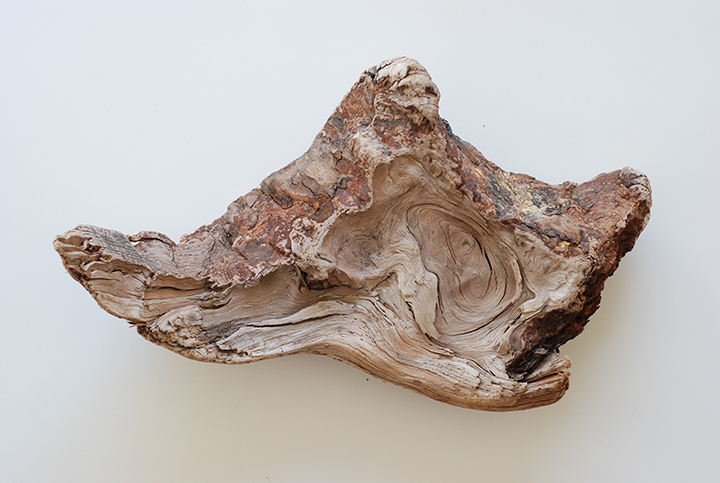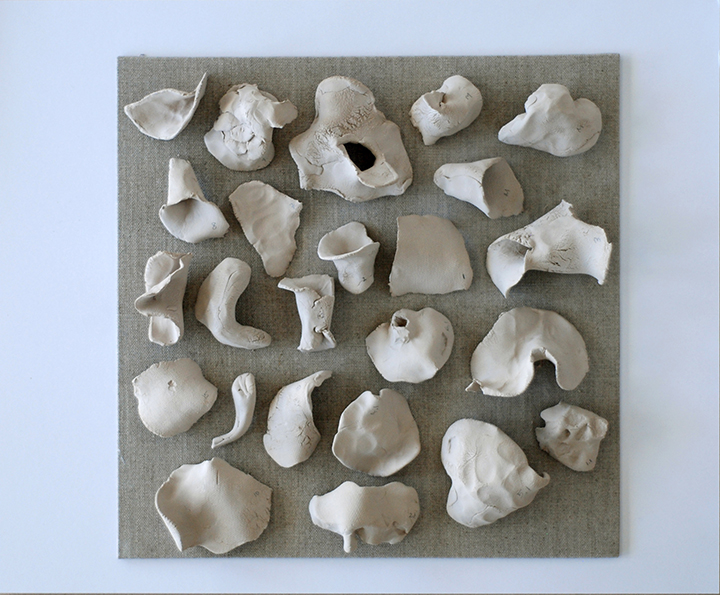Cloud Formation I
Cloud Formations I
Art Omi’s Architecture Field 1: The residency at Art Omi have left an indelible imprint on the project. The soft defuse colors, the flat sky and the soft trails of melting snow are metaphorical principles deeply entwined with Cloud Formations.
The theoretical underpinnings for Cloud Formations was presented as the ACSA Fall Conference in Milwaukee in October 2019. This first opportunity was completed at the Art Omi Architecture Residency in Ghent, New York and aimed to turn my theoretical research into a design project described through drawings and physical models as oppose to text.
My initial interests in digital architecture centered around ideas of networks and systems, but more recently my thinking has evolved towards the cloud. Networks and systems have an immediate analogue in architecture as its links to the city, and the means by which buildings function. The cloud overwhelms those ideas; it might be the anti-architecture par excellence. It is therefore a compelling experiment for architecture to see how it might articulate and inhabit this type of place and material condition. In reading adjacent disciplines to architecture such as Media Studies, I liked the inversion of considering how in the past physical clouds were informational in their use for navigation and agriculture, and our present technological clouds are deeply material with their fibre optic cables, server warehouses and their incredible amounts of expended energy. My research is interested in the question: If we could build an architectural cloud, what would the programmatic relationships be like, how might it work structurally. What kinds of materials would we use to build a cloud? From the perspective of drawing, how do we represent an architectural cloud? How can we draw with gradients short dashes and points, as oppose to long defined lines.
If we use the language, or lexicon on the cloud we might consider how the architecture and its programmatic content becomes “available on demand” which might mean it is many things at the same time. How its function is distributed and that disparate elements share resources to create sufficient redundancy, resilience and efficiency across the disparate sites. If we consider the architecture as an environmental analogue, we might consider how the programmatic relationships are unstable, and emerge through localized disturbances. How the form and reading of space has variable opacity, and that understanding might arise from pattern-based systems that convergence/divergence in a seamless array of transformative combinations.
My primary architectural interests are how space becomes filled volume: this volume is about displacement, and considers not only that we are in space, but that we occupy space, and to enter into space, we have to displace matter. The discussion I propose is to think how the cloud is a compelling social commentary on public space. Public space should be inclusive; therefore, if we shift our thinking about space to volume and its questions of displacement, we can begin to consider how space is finite, and that to occupy space, we might displace others. A cloud can open the dialogue to expand our public sphere. It does this by perforating and diffusing the boundary. At its core, this project tries to eradicate boundaries while defining a program and a space of enclosure. It hopes that this might define a public realm, one that is intimate yet remains open to thoughtful transformation.
Gradient: Cloud Formations considers a number of spatial, operational and material concepts that are present in contemporary architectural discourse. These ideas are an extension of digital architectural theory but considers a number of these ideas through a new volumetric lens. The first of these concepts is the gradient, a shift from one condition to another. In the cloud this might be a shift from liquid of gaseous water, or a subtle shift as in this image of compacted to powdery snow.
Overlap / Porous Boundaries: An extension of both aggregates and gradient, the layers of snow and ice seen in this cross section along a residential road in Ottawa creates a layering of porous boundaries as ice from the layers above seep into lower strata compressing the pile into bands with blurred edge conditions. In this material condition the individual layers are visible, but their edges hard to definitively discern.
Filled Volume / Translucency: The filled volume is a very different architectural condition as oppose to open space. The filled volume of the cloud is a translucent condition that permeates through the entirety of the space. It is the filled volume that defines the social lens of the project, and the question of displacement as oppose to place in considering a new public.
Texture: I was interested in a number of objects, both collected and in situ of textures that undermine the smooth hegemony of contemporary digital architecture, and the discourse of topological surfaces which run counter to the character of cloud formations.
Preliminary Material Investigation: Using found objects, and in a loose configuration seeing the composition of color, texture and the in between spaces that form offers a glimpse at the intent of the design project and a starting point for the initial design.
Preliminary Making Investigation: As a way of exploring the variable tactile quality, I started to explore the formal potential of the project through a series of clay models.
Cloud Formations, Model I
Cloud Formations, Model II
Project Site
The Fishing Dock in Great Grimsby, Lincolnshire, at the beginning of the twentieth century it was the largest fishing fleet in the world. Today, Great Grimsby has all but lost its industrial past. This project’s abandoned infrastructure offers a subversive opportunity to explore ‘Cloud Formations’ as a means to reinvigorating the harbor, merging disparate programmatic elements, and situating contemporary architectural discourse within a historic fabric. The distributed network of Great Grimsby’s past fishing fleet. The sheer scale of the system offered the necessary redundancy that supplied England with a continual supply of fish, scouring further from the coast to grow unsustainable levels of consumption.
The human face of our industrial past. These individuals are the victims of a lost economic system. In this loss they share parallels with the information workers of today, laboring in the background to establish and maintain the systems that silently interface with our daily lives. The school of fish caught and brought to shore describe metaphorically a distributed cloud of points. The past bounty of the ocean a present acknowledgment that this bounty is in fact finite. This is true for the oceanic, atmospheric environment where air and water are increasingly polluted and our informational environment that is expanding at an unsustainable rate of consumption. Presently oceans, atmospheres and data-scapes are repositories for our present efforts, future hopes and discarded pasts.
The Fish Dock in relation to the surrounding city of Great Grimsby. This map shows the remarkably desperate transformation of abandonment in Great Grimsby’s industrial area. The site was selected for the metaphorical significance of the ice factory to the surrounding water, and the networked relations of the historic fishing fleet to the ocean beyond. The historically important Ice Factory is critical to the project as an opportunity to have solid, liquid and gaseous water for the development of literal clouds. The ice cools the cloud formation and is used in the fish market to refrigerate the fish. The building is the larger server for the surrounding program functioning as the critical node in a public network of distributed programs.
Preliminary program drawing, pen with India ink
Schematic interior view, pen with India Ink
Interior vignette of the market space, India Ink over ceramic roof elements
Cloud Formations I Plan, the Fish Dock at Great Grimsby
Program
The existing factory can shift as a house for goods, to a node for service. It overlays the pervasive shift from our industrial past, to our data-heavy future, and the role architecture can play in transforming places of labor, into nodes of service in a world-wide distributed network. While the cloud is symbolically atmospheric the informational cloud is in fact very terrestrial, burrowed under the streets and resting at the bottom of oceans. This network is not dispersed but linked through a series of critical lines that span the globe.
The cafe explored ideas of diffusion as the flooring and walls of the space melt away creating a series of overlapping spaces that bridge a new street corner within the existing Ice Factory building.
The market was designed to continue the diffusion and overlap of the cafe with programmatic elements loosely aggregating across the space gently directing pedestrian traffic along the length of the market
The roof is a series of complex aggregations that evolve from intensive, smaller forms to longer, extensive forms that direct the flow of people. The floor and roof are two disparate systems that overlap in particular points but are considered as semi-autonomous systems playing different roles in articulating the space in between.
The Pier mediates between the land and water. It is the location of work in the fish farms accessible from the southern edge, and the wading pools that perforate the space. Here water/land, work/leisure blur. On the Pier a series of programmatic elements: changing, washroom, lockers, showers, seating and bike racks aggregate to form a series of related, loose relations that define a set of ancillary, adjacent space.
The fish farm attempts to re-establish a working relation of the pier to its evolving programmatic elements linking work with leisure, the past with present and creating an enclosed watery place as a counterpoint to the open watery space of the pools and the water land-space of the park islands resting in the harbor.
The coastline is sloped to allow the tidal waters to blur the edge of land and water. As the tide rises it eats away at the leisure program condensing its users into a tighter, more intense public body, as the tide recedes individuals can spill out to the islands to find some distance and privacy in the heart of the industrial city













